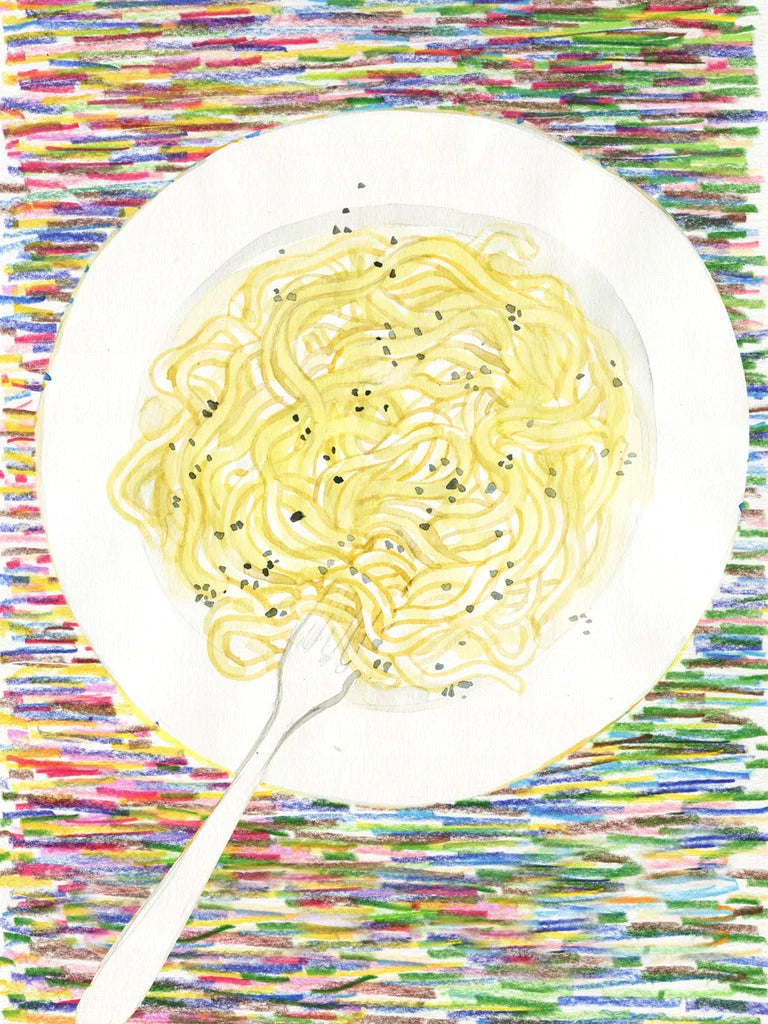A traditional recipe
It's quite magical how two simple ingredients, Pecorino Romano cheese and black pepper, can work together so effortlessly to create an exceptional dish. Originating from Rome, the classic pasta dish can be made in under 10 minutes. But be aware, execution and timing are everything here.
Ingredients for 4 people:
8g whole black pepper
150g Pecorino Romano cheese
400g spaghetti or linguine
2 tablespoons sea salt
Grate the pecorino cheese very finely, the finer the better and set aside in a small bowl at room temperature. Bring a medium saucepan of water to the boil. Season generously with sea salt and add the pasta. It is important here that you use less water than usual, this will result in a higher starch content in the pasta water, which is essential. Heat a frying pan or deep-sided frying pan over a medium heat, add the whole peppercorns and lightly toast for 2-3 minutes. Remove the peppercorns and roughly crush in a mortar or pepper mill. Keep the frying pan warm over a low heat, you will need it again shortly.
4 minutes after the pasta is cooked, remove a cup of pasta water and set aside. Let it cool for 2-3 minutes. Gradually add about 6 tablespoons to the grated pecorino and mix thoroughly until it has a thick creamy consistency. Then set aside.
2 minutes before the pasta is al dente, drain it. Be sure to keep some of the starchy water. Add the pasta to the pan over medium-high heat along with the crushed pepper and a cup of pasta water. Stir the pasta vigorously until you see the starchy water evaporate, thicken and begin to emulsify. This process should take about 2-3 minutes. Remove the pan from the heat and continue stirring, allowing it to cool slightly. After 2 minutes, add the pecorino mixture, stirring constantly. The sauce should have a creamy, even consistency. Add a little more pasta water if necessary. Remove from the pan, grate a little more cheese over the top and serve immediately.
COOKING TIPS: It's all about timing, temperature and that all-important starchy pasta water. If the cheese clumps, it's because it wasn't grated finely enough or the temperature of the pasta was too high.
Johannes from the Great Taste Team wishes you good luck and lots of enjoyment!





